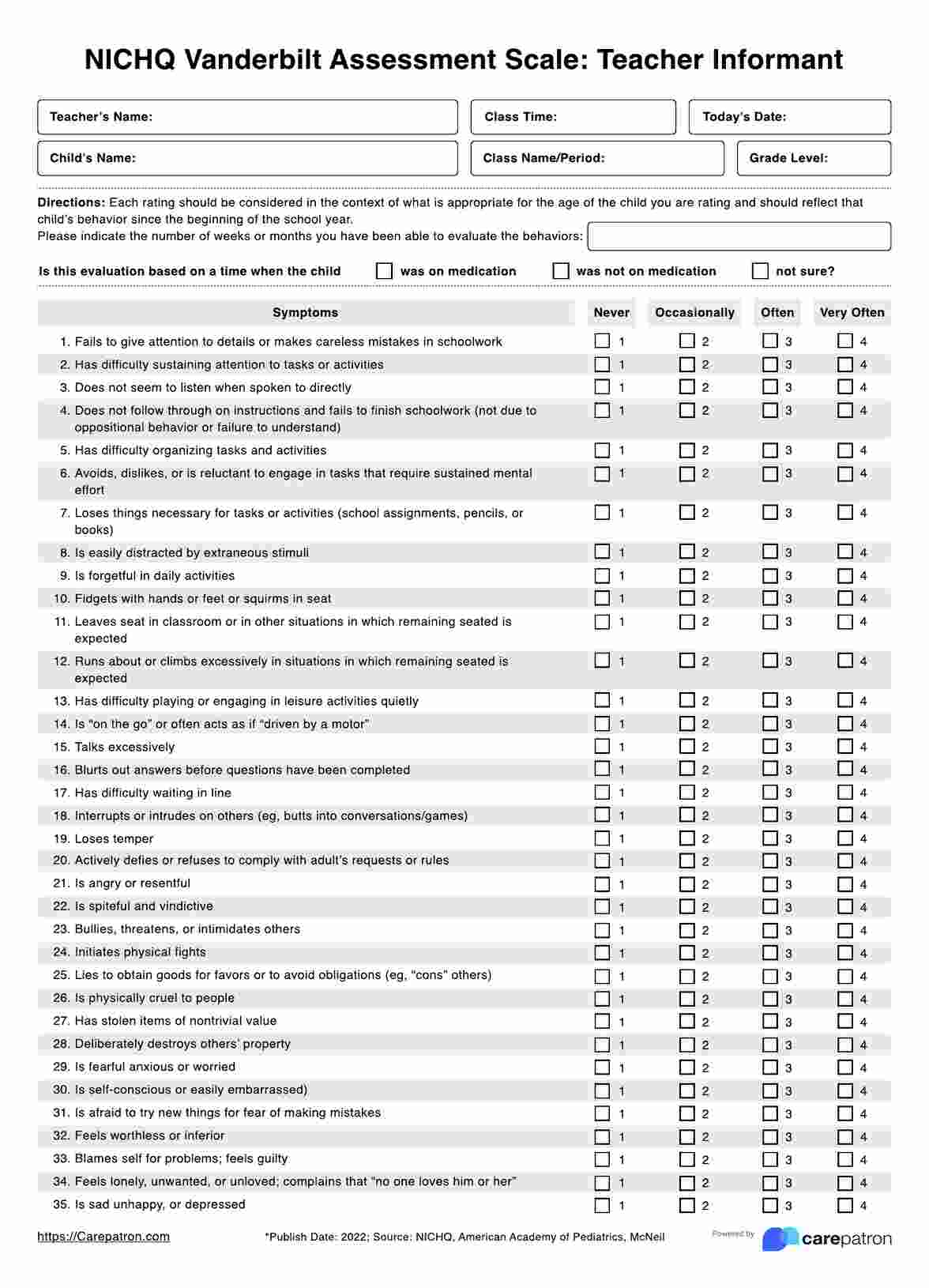The NICHQ Vanderbilt Assessment Scale is designed to assess for ADHD in children aged 6 to 12.

NICHQ Vanderbilt Assessment Scale for Teachers
Download the NICHQ Vanderbilt Assessment Scale for Teachers. Evaluate ADHD symptoms, behavior, & progress in children. Includes guide, forms, & scoring tips.
NICHQ Vanderbilt Assessment Scale for Teachers Template
Commonly asked questions
Yes. The NICHQ Vanderbilt Assessment Scale for teachers includes two forms: one for the initial assessment and another for follow-up evaluations. After a diagnosis is made, the shorter follow-up scale is used to monitor the child’s progress over time.
This assessment is best used when a teacher meets with a healthcare provider to discuss concerns that a student may have ADHD. It should be provided to the teacher during or after this discussion, once parental permission has been obtained to report concerns about the child’s possible ADHD.
The teacher may complete the form during the appointment or take it home to allow for more thoughtful responses. Prompt completion of the assessment enables timely diagnosis and the development of an effective care plan—an important step in supporting the child’s educational experience, both now and as they progress through higher levels of schooling.
EHR and practice management software
Get started for free
*No credit card required
Free
$0/usd
Unlimited clients
Telehealth
1GB of storage
Client portal text
Automated billing and online payments











